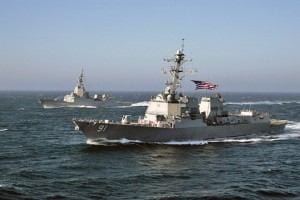Travel News
Malaysia Airlines Investigation: Speculation vs. Fact in MH370
 It’s one thing to look for a needle in the haystack. But the crash and disappearance of Malaysian Air flight 370 is confronting investigators with an even more difficult task—they first have to find the haystack…and that may take many more days.
It’s one thing to look for a needle in the haystack. But the crash and disappearance of Malaysian Air flight 370 is confronting investigators with an even more difficult task—they first have to find the haystack…and that may take many more days.
Peter noted:
The lack of a widespread debris field leads me to believe two things: the plane did NOT break up in flight and then hit the water intact. And number two: the plane may have flown longer — and further — than initially thought. Translation: the investigators may have first looked in the wrong area and may now have to widen their search…as a result, we may have to wait much longer to discover the exact location of the aircraft. And, then, whenever they find the wreckage..that’s when the investigation gets to start in earnest, and then, and ONLY then, can investigators begin to systematically rule things out, one by one, and slowly begin to form a credible and supportable theory as to the probable cause…for the moment, the search continues, and we all wait..
The disappearance is an unprecedented mystery. Seven countries are currently involved in the search and while speculation is rampant, little is known.
Keep in mind, investigators cannot “rule in” a probable cause until they systematically rule out other factors. Possible causes include catastrophic structural failure at altitude, pressurization errors, weather, and human error. At this point, the only cause that can be logically ruled out is weather.
With no widespread debris field, it’s hard to even know where to start looking. Investigators are looking for the ELT—the emergency locator transmitter. Located in the tail of the plane, the transmitter is designed to release a signal upon impact. It has a 48-hour lifespan during which it pinpoints its location to rescue satellites. There has been no alert, so investigators are considering that it is likely the plane is in the water.
Speculation is focusing on terrorism since two passengers were traveling with stolen passports. However, stolen passports are rarely monitored. In fact, passengers boarded planes 1 billion times last year without their passports being screened against the Interpol database. The stolen passports raise red flags, but it’s unclear whether it is related to what happened on board.
Currently, there are teams from the National Transportation Safety Board (NTSB) investigating both security and safety for the crash. There are also terrorism teams from the FBI, metallurgical teams, and engineering teams. Investigators will also be looking at the human factor—what was going on in the pilot’s and co-pilot’s lives.
Watch Peter’s CBS This Morning report to separate fact from speculation in the Malaysia Airlines investigation.












